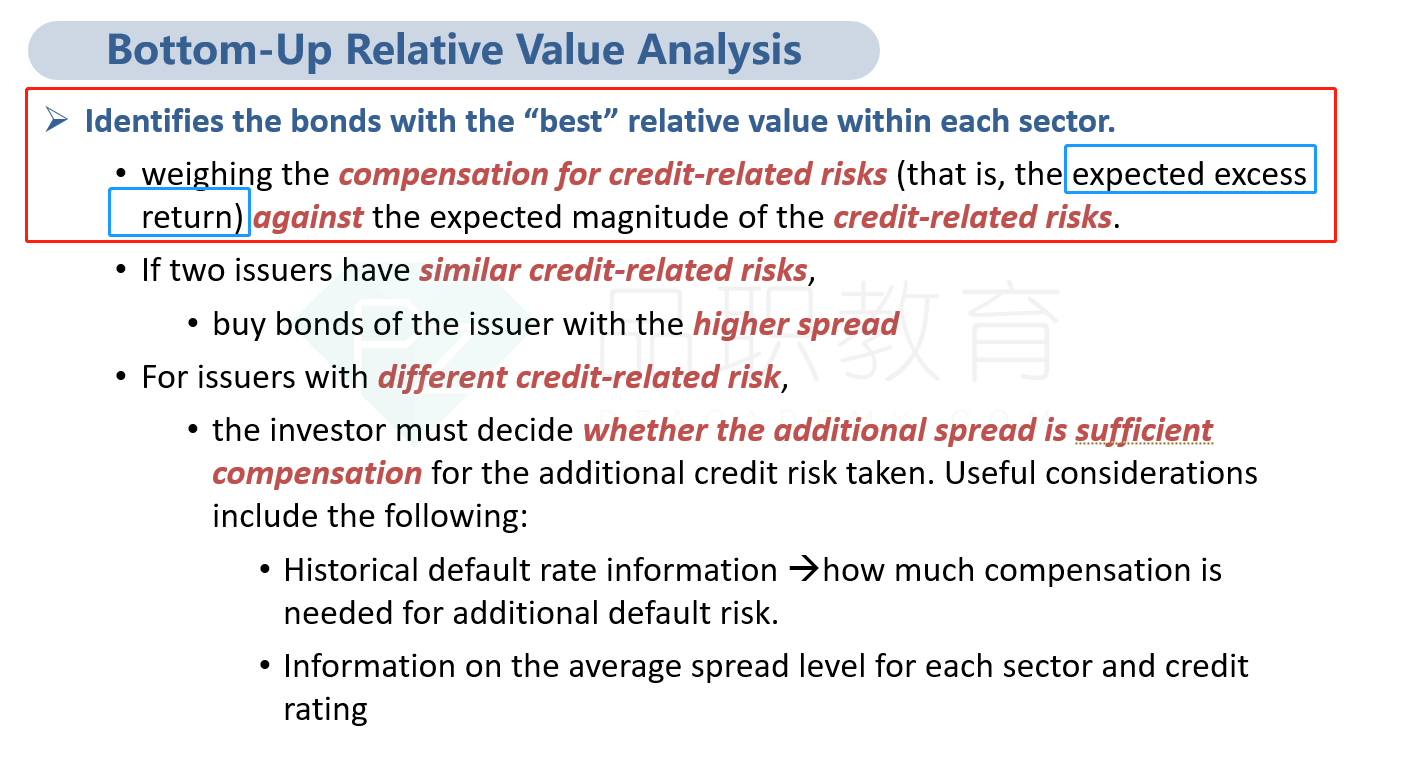问题如下:
Easton and Avelyn next discuss credit strategy approaches. Dynamo uses a bottom-up approach that selects bonds with the best relative value from the universe of bonds with similar characteristics.
Which of the following is most likely to be used when selecting securities based on Dynamo’s credit strategy approach?
选项:
A.Macro factors
Expected excess returns
Average option-adjusted spread
解释:
B is correct.
Analyzing expected excess returns against the expected magnitude of the credit-related risks is key to the bottom-up approach. Once the credit universe has been divided into sectors, the investor identifies the bonds with the best relative value within each sector. If Dynamo decides that two issuers have similar credit-related risks, then it will typically compare credit spread measures and buy the bonds of the issuer with the higher spread because those bonds likely have a higher potential for excess returns. For issuers with different credit-related risk, Dynamo must decide whether the additional spread adequately compensates for the additional credit risk.
OAS spread is one way to compare relative value across credit security. 为什么不能选C来选择bond?谢谢






